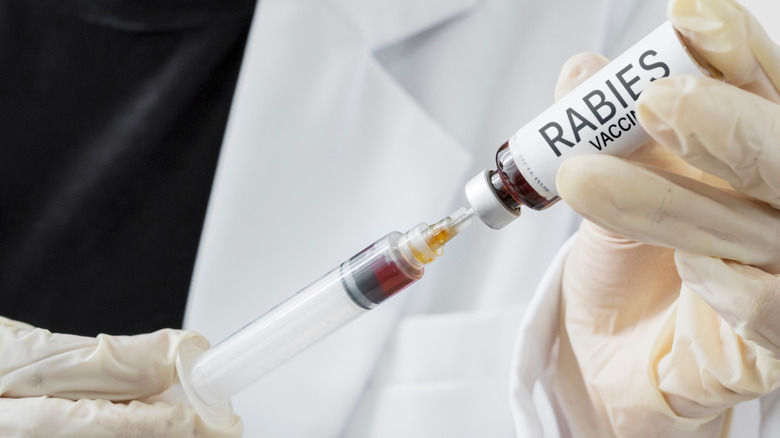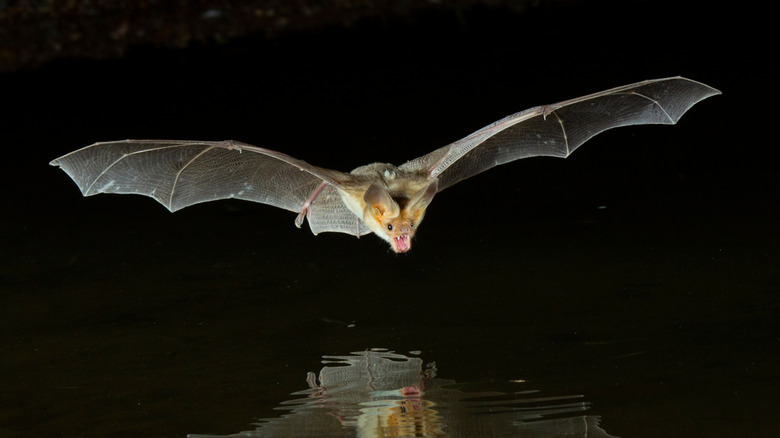What Really Happens To Your Body If You Get Rabies?
Out of all the viruses that pose substantial public health risks, the rabies virus is one of the few likely to be fatal without immediate treatment, with only a handful of known survivors (via World Health Organization). Rabies, which only affects mammals, has been responsible for the deaths of many wild animals, pets, and on occasion people. It targets the central nervous system, and in a span of what can be weeks or months, according to USA Today, symptoms may initially appear flu-like before they progress to including insomnia, hallucinations, and agitation.
In what medical professionals recognize as the final stages before death, the victim experiences extreme aggression and hydrophobia — where they will actively try to escape close proximity to water (via Medical News Daily). Paralytic rabies, a less common variant, can instead cause muscle paralysis that radiates out from the bite until the victim becomes comatose. In either case, the virus induces inflammation in the brain, which ultimately reaches a point that it kills the victim.
Early treatment saves lives
According to the Centers for Disease Control and Prevention, it is predominantly wild animals such as bats, raccoons, and foxes that carry the disease. Bats are one of the leading sources of transmission, as opposed to raccoons or stray dogs — animals that are often the first people will blame for the virus. In 2021, five people across the United States died of rabies after they were bitten and infected by bats, representing a substantial spike in the country's mortality rate from the disease.
While early treatment would likely have saved them, per NBC, these people either did not know until it was too late or did not think the bites were sufficient to have caused infection. In other parts of the world, where vaccination and/or awareness of rabies and its transmission may not be readily available, mortality rates are typically far greater (via Morris Animal Foundation).

